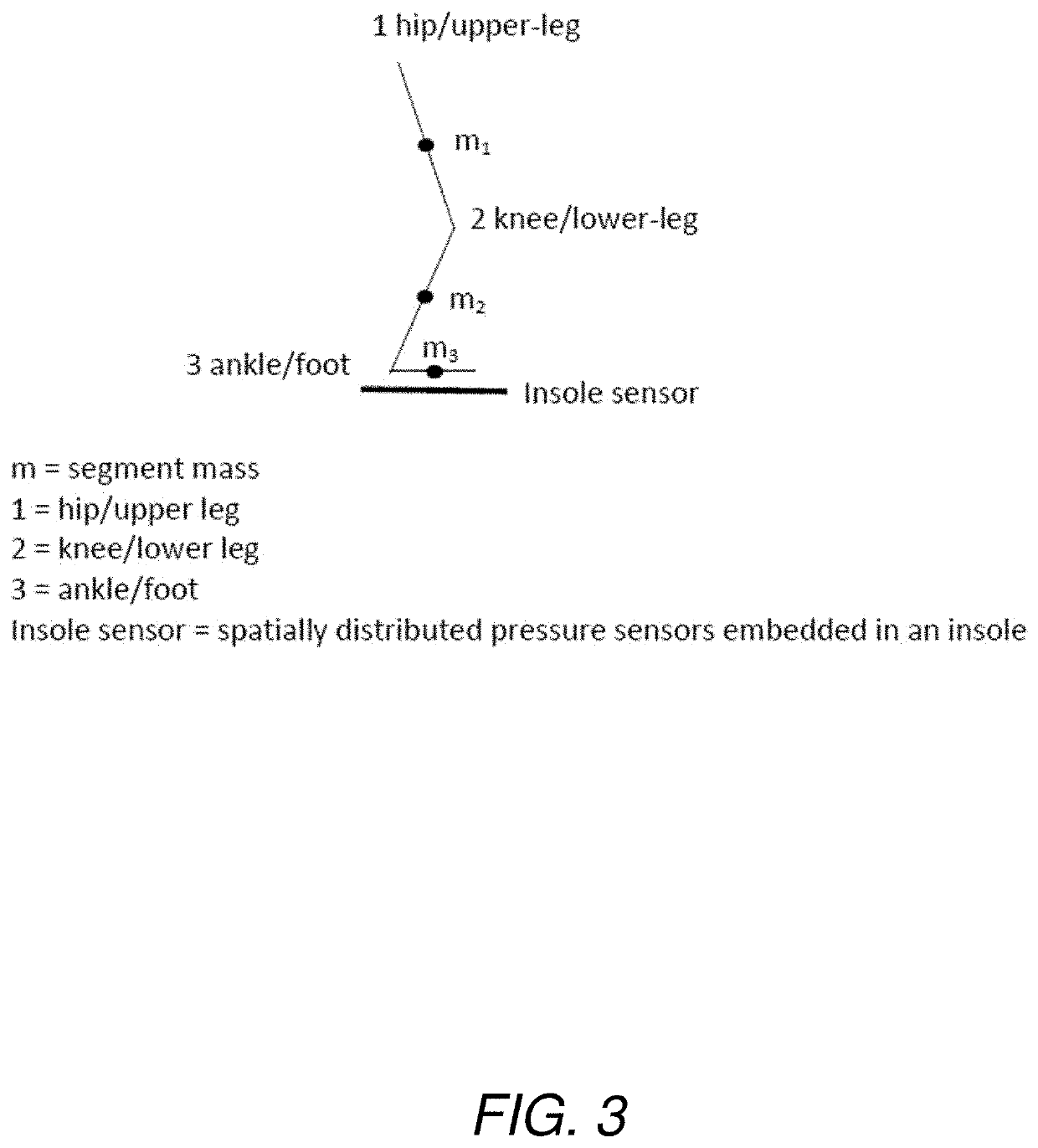Artificial intelligence assistance to change biomechanical loading
a technology of biomechanical loading and artificial intelligence, applied in the field of motion adjustment instruction, can solve the problems of not helping users alter their running style, runner is often unaware, and does not know what aspect, so as to reduce the risk of injury, and reduce the overall probability of injury.
- Summary
- Abstract
- Description
- Claims
- Application Information
AI Technical Summary
Benefits of technology
Problems solved by technology
Method used
Image
Examples
first embodiment
[0088]A computer processor, memory and power supply are contained within a small module that is attached to the user's shoe. The module can communicate wirelessly with a remote computer that is used to input instructions to the coaching system. Typically, this remote computer can be a “smart phone”, tablet or personal computer. Alternatively, input and output devices can communicate directly with the shoe module by wireless link. While the user is running, data can be stored in the shoe module or optionally transmitted to a remote computer and after the run the data can be read out to a remote computer for data analysis and presentation of coaching instructions to the user. Alternatively, the shoe module in combination with wirelessly-connected external devices can provide feedback and coaching instructions to the user at regular intervals while they are running. The system uses real time measurements and models to derive physiological and / or biomechanical parameters. In particular,...
second embodiment
[0100]In a second embodiment, in addition to foot pressure sensors to measure ground contact forces, IMU sensors are connected to other parts of the body in order to get a more direct estimate of limb positioning, rather than having to use statistical correlation using measurements from a population of runners. In Kim et al “Estimation of Individual Muscular Forces of the Lower Limb during Walking Using a Wearable Sensor System” Hindawi Journal of Sensors Volume 2017, Article ID 6747921 https: / / doi.org / 10.1155 / 2017 / 6747921, IMUs are attached to the body as shown in FIG. 6 and are used to estimate limb positions and accelerations to enable muscular forces to be estimated.
third embodiment
[0101]In a third embodiment, only IMU sensors are used to determine body kinematics and no foot pressure sensor is employed. The number and placement of IMU sensors determines how accurately the biomechanical load distribution can be determined and statistical correlation modelling with a population of runners is required to estimate the ground reaction forces. This approach has also been applied to ski jumping for example (Logar and Munih, 2015, Sensors 2015, 15, 11258-11276; https: / / doi.org / 10.3390 / s150511258).
[0102]For any of the above embodiments, the system can calculate a “profile” that represents the physical state of the runner at a particular moment in time. A typical profile is shown in FIG. 7. Further physiological parameters can be obtained if suitable additional sensors are worn. For example, blood oxygen level can be estimated with an SpO2 monitor using light transmission through capillaries in the skin and breathing rate can be measured using an IMU strapped to the ch...
PUM
 Login to View More
Login to View More Abstract
Description
Claims
Application Information
 Login to View More
Login to View More - R&D
- Intellectual Property
- Life Sciences
- Materials
- Tech Scout
- Unparalleled Data Quality
- Higher Quality Content
- 60% Fewer Hallucinations
Browse by: Latest US Patents, China's latest patents, Technical Efficacy Thesaurus, Application Domain, Technology Topic, Popular Technical Reports.
© 2025 PatSnap. All rights reserved.Legal|Privacy policy|Modern Slavery Act Transparency Statement|Sitemap|About US| Contact US: help@patsnap.com



